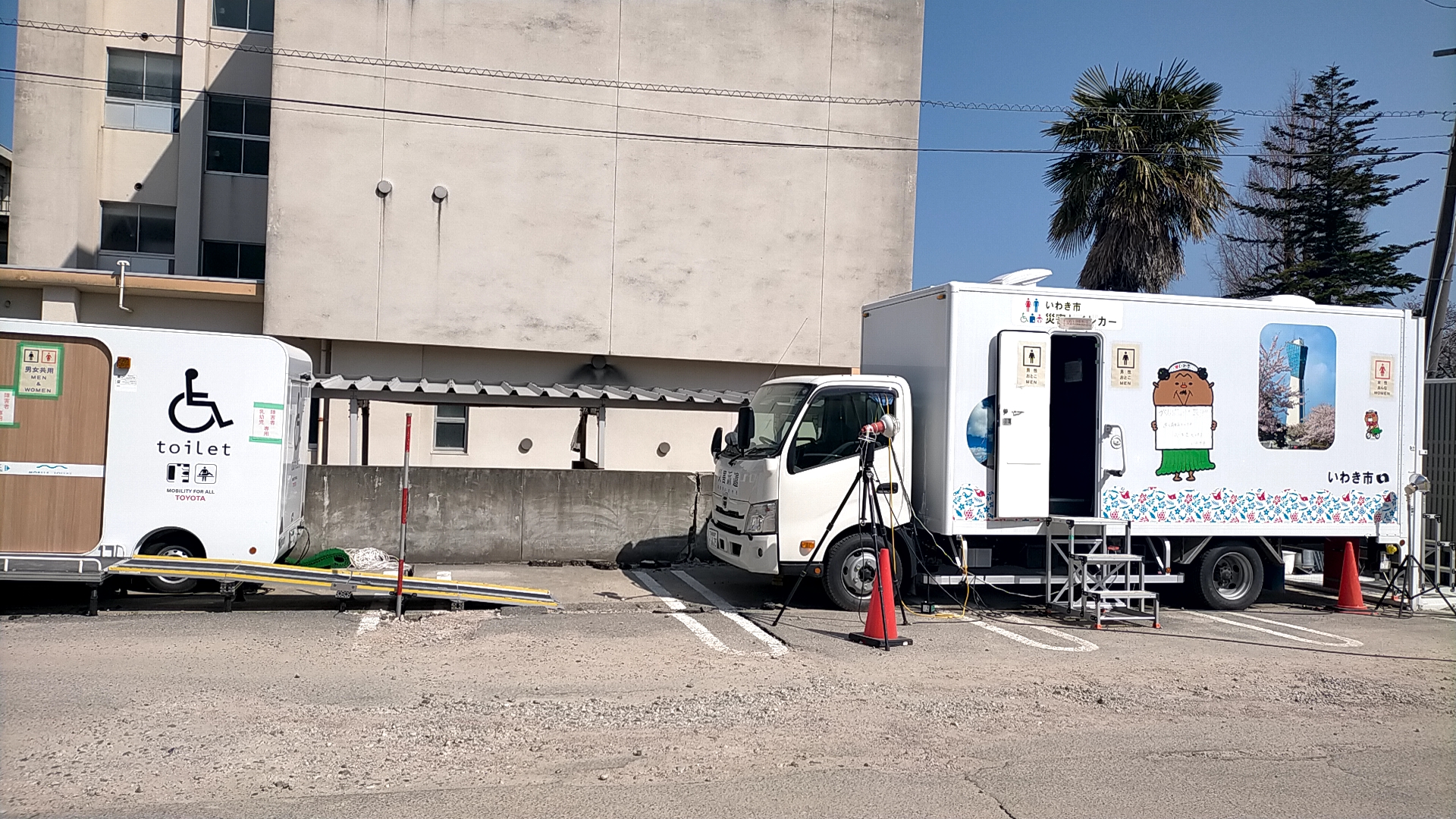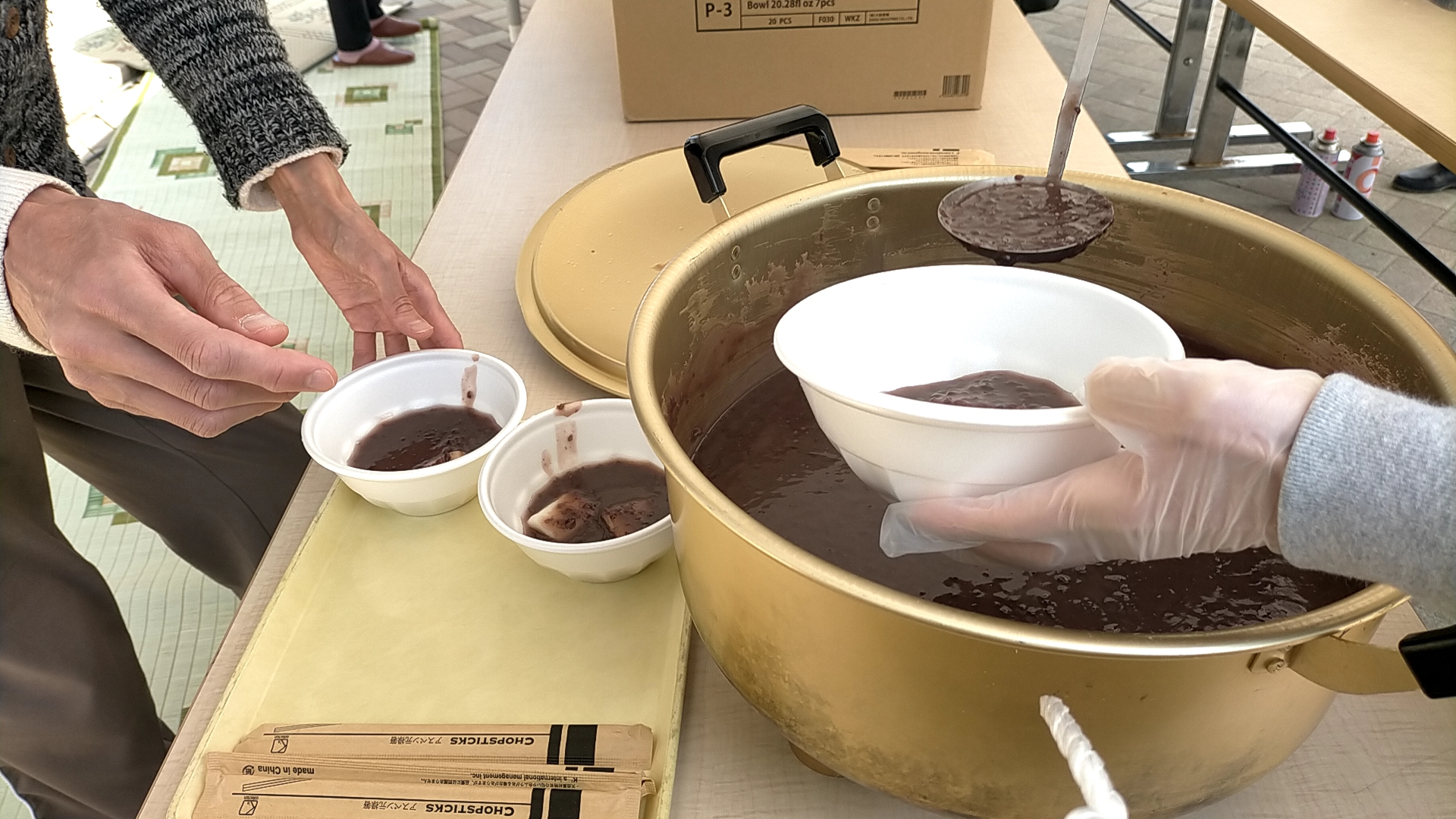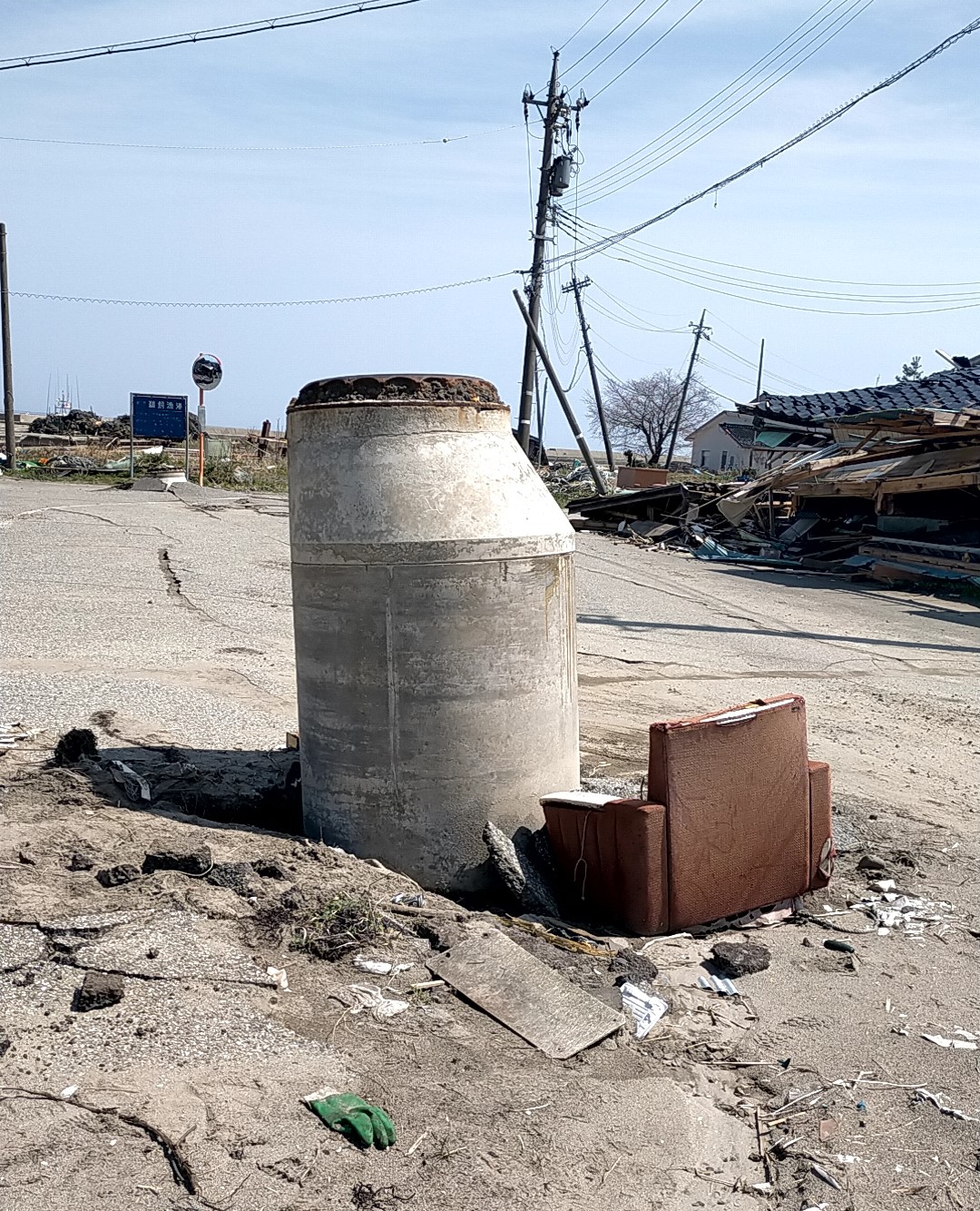HuMA nurses currently on assignment in Nanao City were sent to Suzu City during January-February. Today is her day off, so she visited Suzu City for the first time in two months.
When I went to the Horyu Elementary and Junior High School evacuation center where HuMA used to work, I approached an evacuee I knew who was distributing oshiruko (sweet red-bean soup). They told us that they are no longer serving soup and only distributing boxed lunches. They will start moving into temporary housing tomorrow, so they decided to make oshiruko this time and have it for the last time with everyone. Just then, the head of the evacuation center, who had taken such good care of us during our dispatch, began to make an announcement in the building. He said, “Tomorrow we will start moving into temporary housing. Today will be the last time we will eat together. Everyone looked sad, and we were all filled with sadness.
I was also able to meet again with the director of the evacuation center. He told me that 153 temporary housing units have been built on the grounds of elementary and junior high schools and that everyone will move in one by one starting tomorrow. While we were talking, the director of the Health Promotion Center came out of his classroom. It had been a long time since I had seen him. I did not expect to see him at the school on Sunday. He had come to hold a briefing session on the temporary housing in the afternoon.
We were also able to greet the nurses, courtesy of the head of the evacuation center. According to the nurses, disaster relief nurses were dispatched until the end of March, and nurses from the nursing association from April. She said that the evacuation center was able to operate without any problems.
The nurse’s house was newly built but she was living in inconvenient conditions as there was no water supply and the sewage system was not working due to the breakdown of the septic tank. Many of the houses in the neighborhood were broken down, and there was no pedestrian traffic at all. The area was originally an area with few children, but since the earthquake, they have not been seen at all, and it still seems difficult for them to accept the reality of the situation.
Just around the area where the medical container we had been using for our activities was located a mobile laundry and a fashionable container for a simple resting area. I looked into the infirmary, which had also been used as a clinic, and found the same scene as when we left: a couple we recognized in the 3rd and 4th grade classrooms, and they looked very healthy.
It was a very short stay, but everyone welcomed me warmly. I could feel that people in the disastrous area are gradually moving toward a new phase.
 |
 |
 |
 |

